Baisha: Life in an ancient Chinese town
On the foothills of the Himalayas there is this tiny Chinese village called Baisha. It is one of the oldest in the region, having its roots in the Tang Dynasty (618 - 907 AD) and home to the Naxi people. With its cobblestone streets, fresh air, and ancient constructions, you can almost feel as a fly on the wall watching this traditional Chinese town.
Almost.
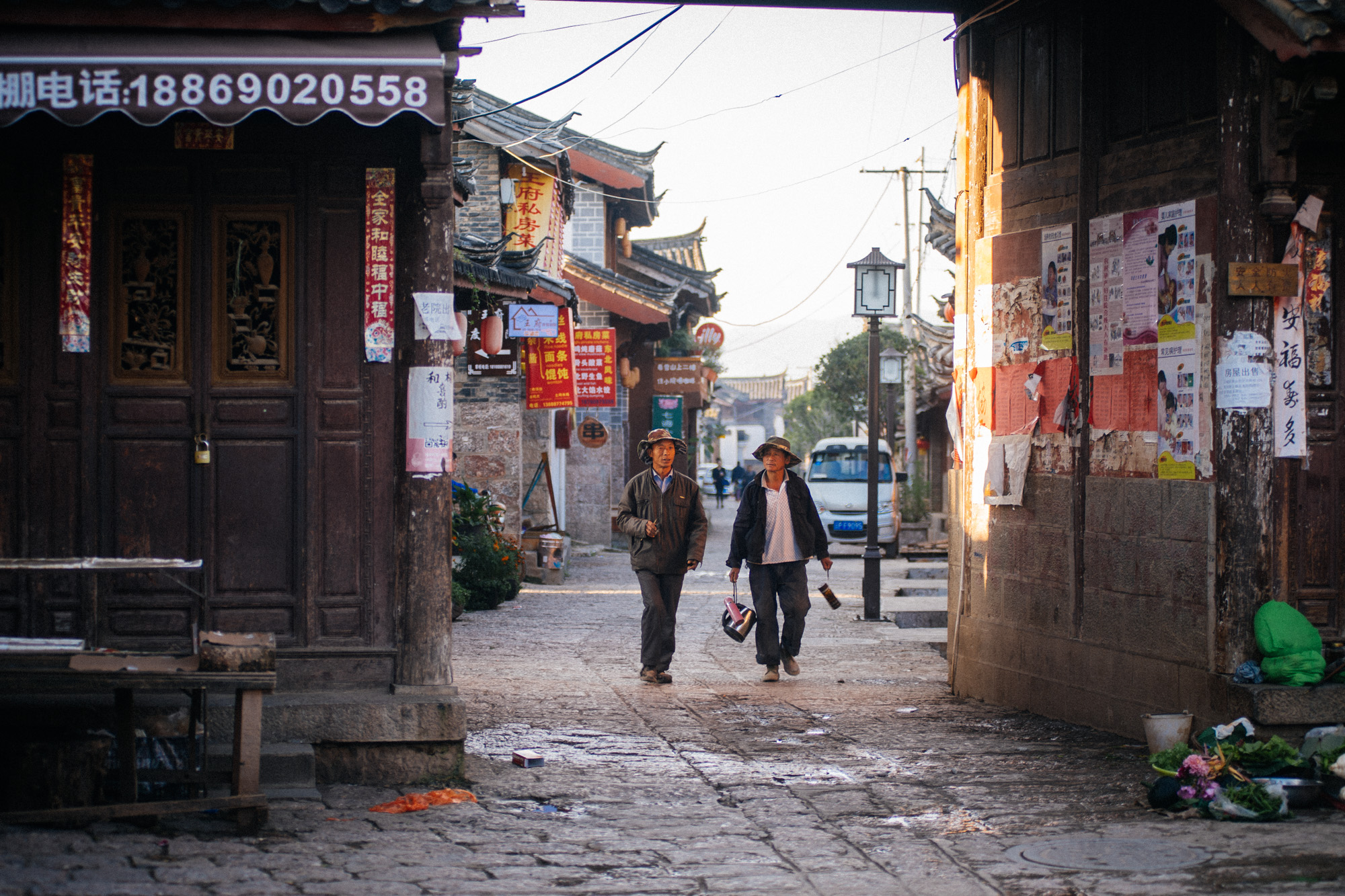
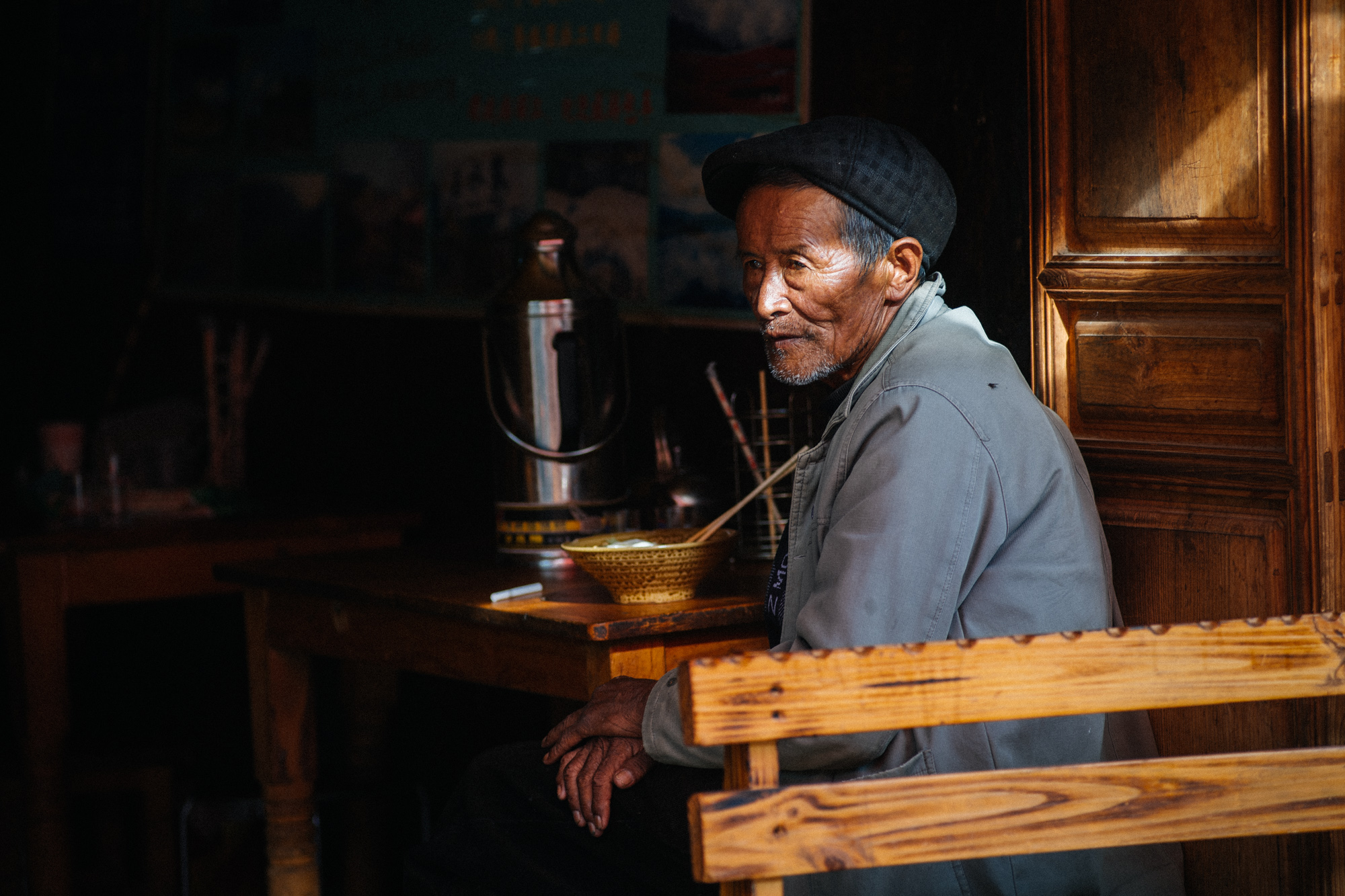



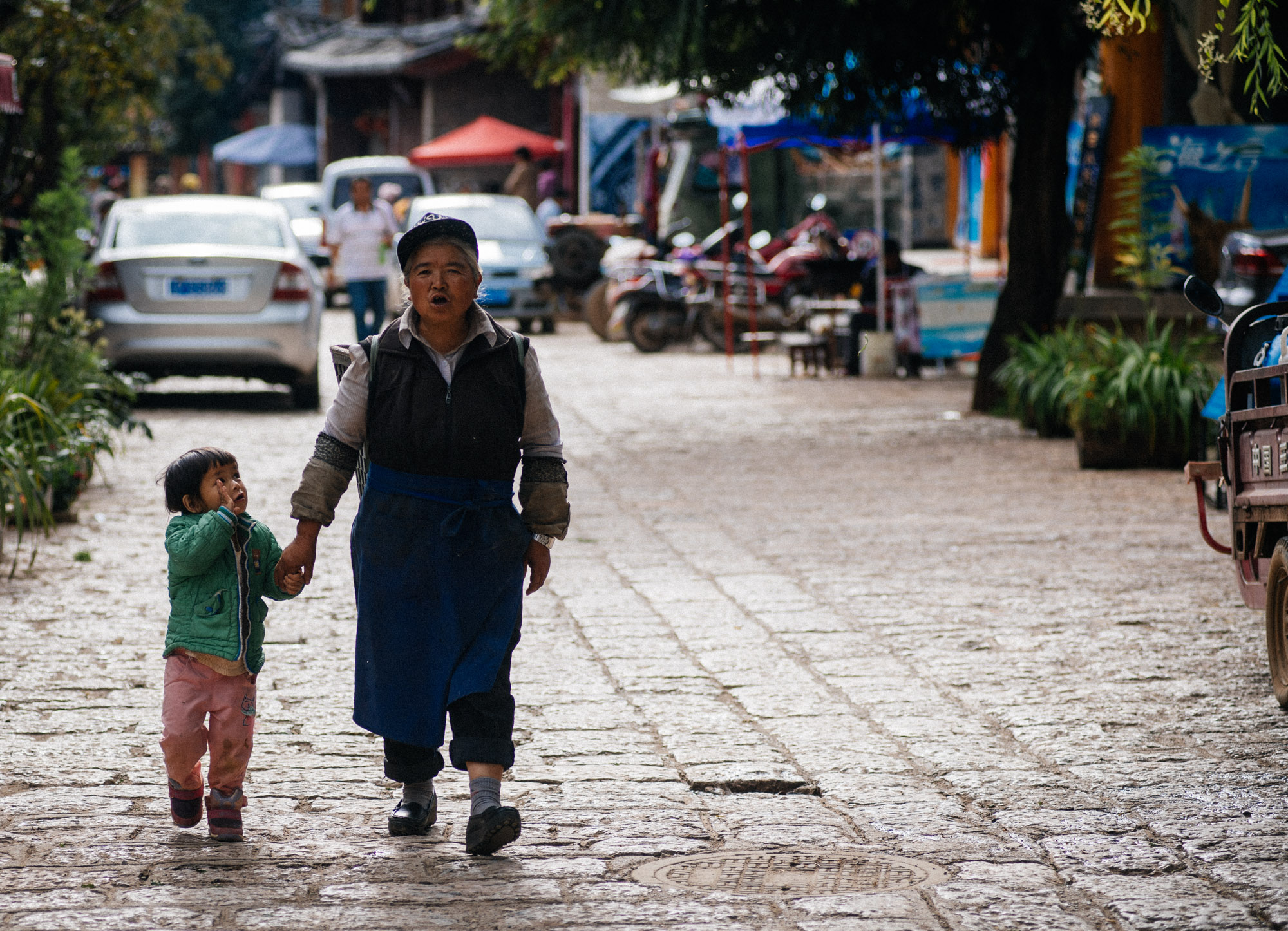




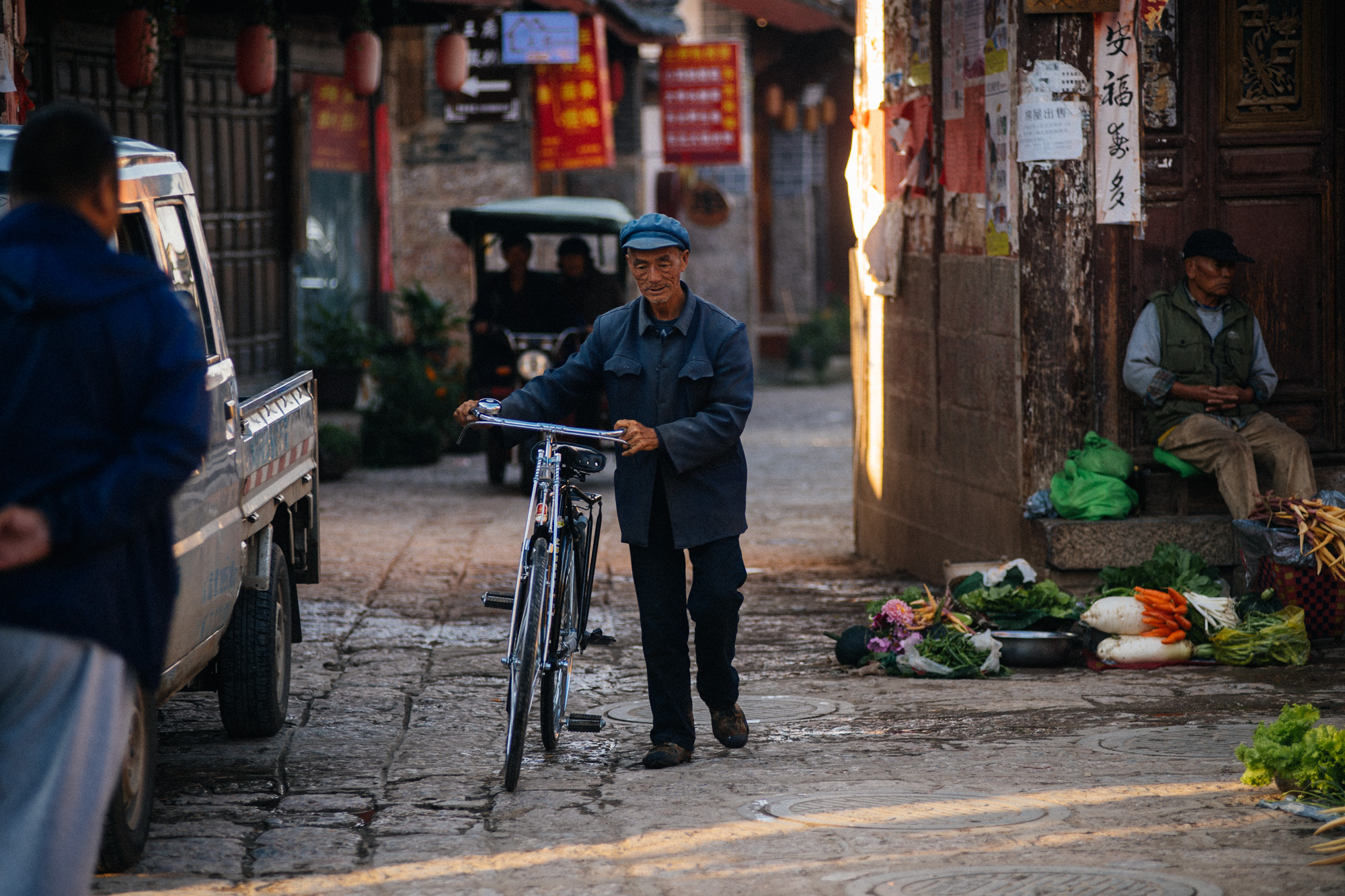

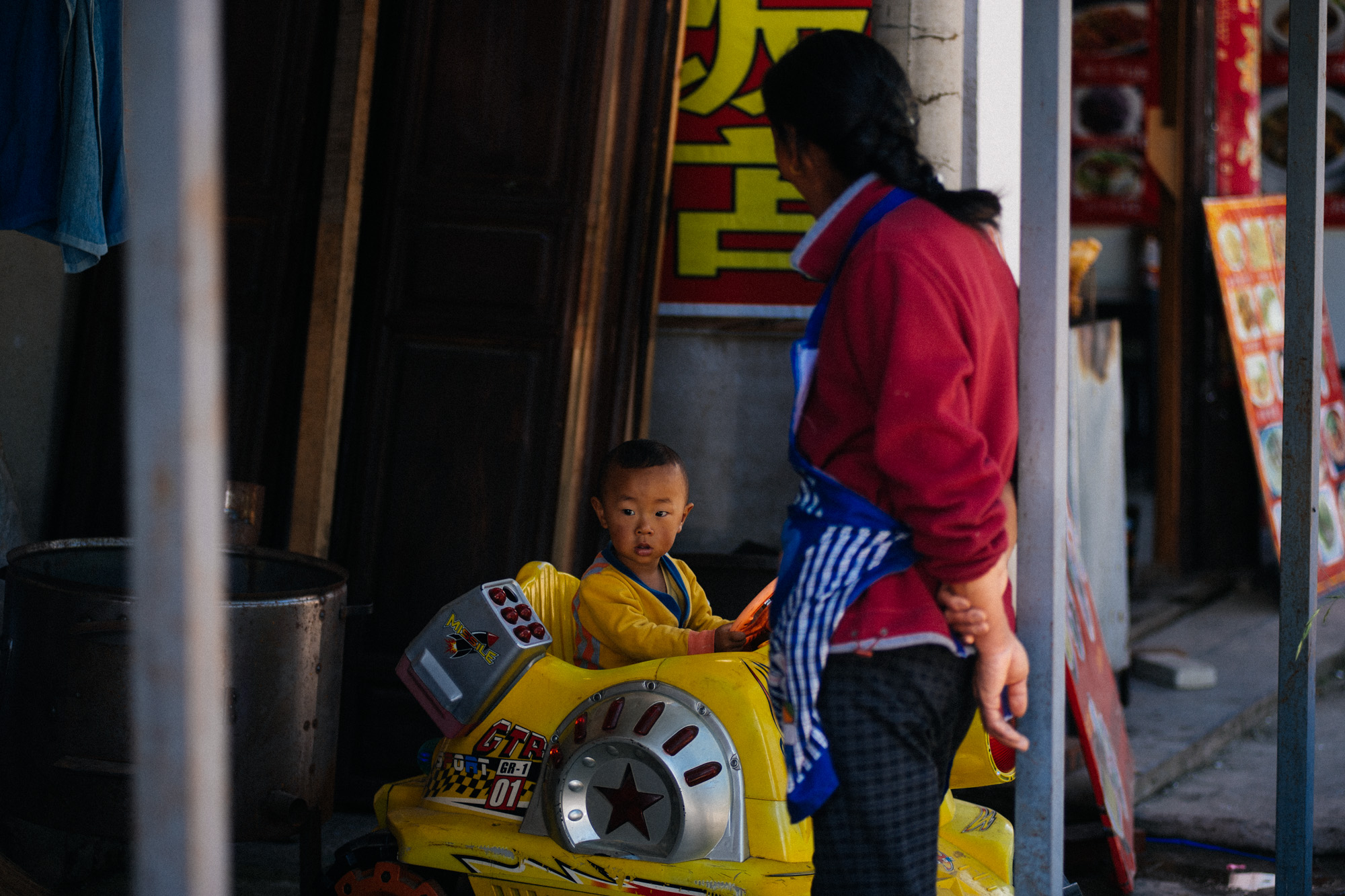
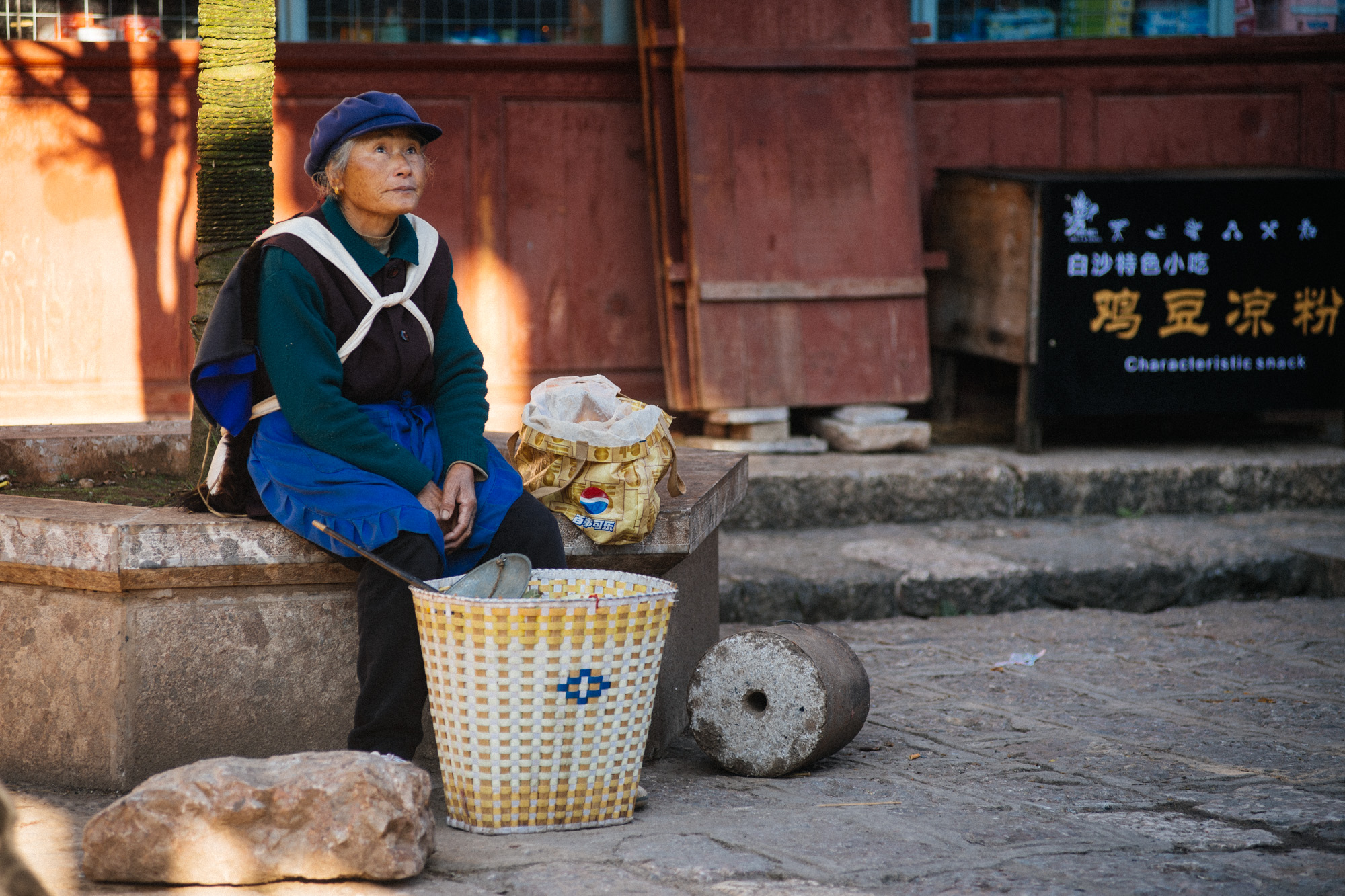


Although Baisha does retain it's small town features, it's barely off the beaten path, a mere 40 minute bike ride (8 Km) from the also ancient but immensely popular tourist destination of Lijiang. So every now and then there is a group of tourists that flock into town to buy stuff and take pictures, like myself.
I spent the night at a fairly decent place for 20 USD per room. There was no heating and at 2400m (7900ft) above sea level it does get pretty chilly at night. I'm used to it, feels like home. The only odd thing was that the bathroom had no door. The only thing diving the person inside from anyone else in the room was a big sheet slit in half hanging over the entrance that looked like a big pair of pants, which made no improvement to sound, visual or scent isolation. On the other hand, getting up at sunrise and being able to see first light shining on Jade Dragon Snow Mountain is priceless.
First morning light hits Jade Dragon Snow mountain as seen from the door of my hotel room at around 7 am on a cold autumn morning.
At 7 am there are barely any tourists outside and to me that's when the city is truly alive. In the main square, the butcher drives up and sets ups shop with a freshly slaughtered pig in the back of his van and starts selling his meat. Little by little the locals come up to him buying what they can. First come, first serve. Beside him is a lady with some fruit and vegetables. On the other side, beneath the arch, is the competition, selling more fresh meat and vegetables.
Butcher sells a chunk of pork to the woman that is selling vegetables in the stand right beside him. I can only assume she got the best part as she was the day's first customer.
Despite many local residents depending on tourists for their income by selling food and souvenirs, I still was able to see farmers, butchers and cattle herders that seem to live as they would without visits from outside.
Man accompanies his cow down the road across town as he probably does every day. At the end of the day I saw the two heading back in the opposite direction.
In an hour or two, before any tourist arrives and almost as quick as they came, the vendors gather their things to give their place to the souvenir sellers.
Baisha, or 白沙古镇 in Mandarin, means White Sand Ancient Town. The name supposedly came from the color of the sand the village is built upon.
The Naxi people have their own language and even hieroglyph style writing system. In Baisha you can see an ancient temple and mural. This location is where most of the Chinese tour busses go. Usually the Chinese tourists just look at the murals and head back, with only a small portion of them venturing into town.
Naxi fresco painted hundreds of years ago. No photos, whoops.
Unfortunately, this place as many others around the world is succumbing to tourism and losing its aura and authenticity. If you have the chance, visit before it becomes another Disney-like tourist attraction with replicas as so many in China.








